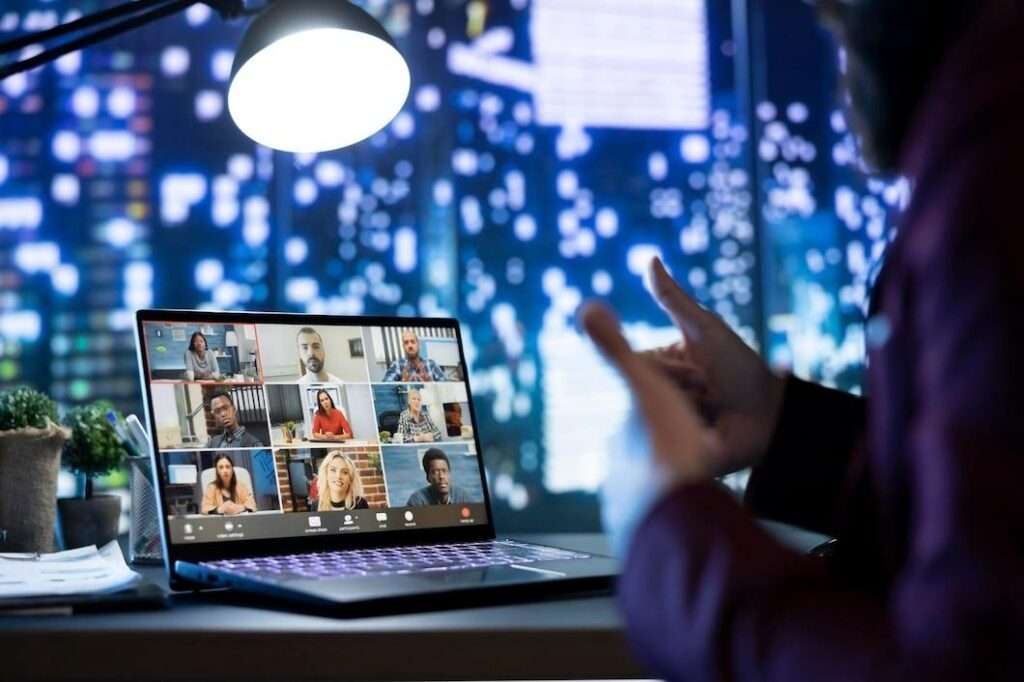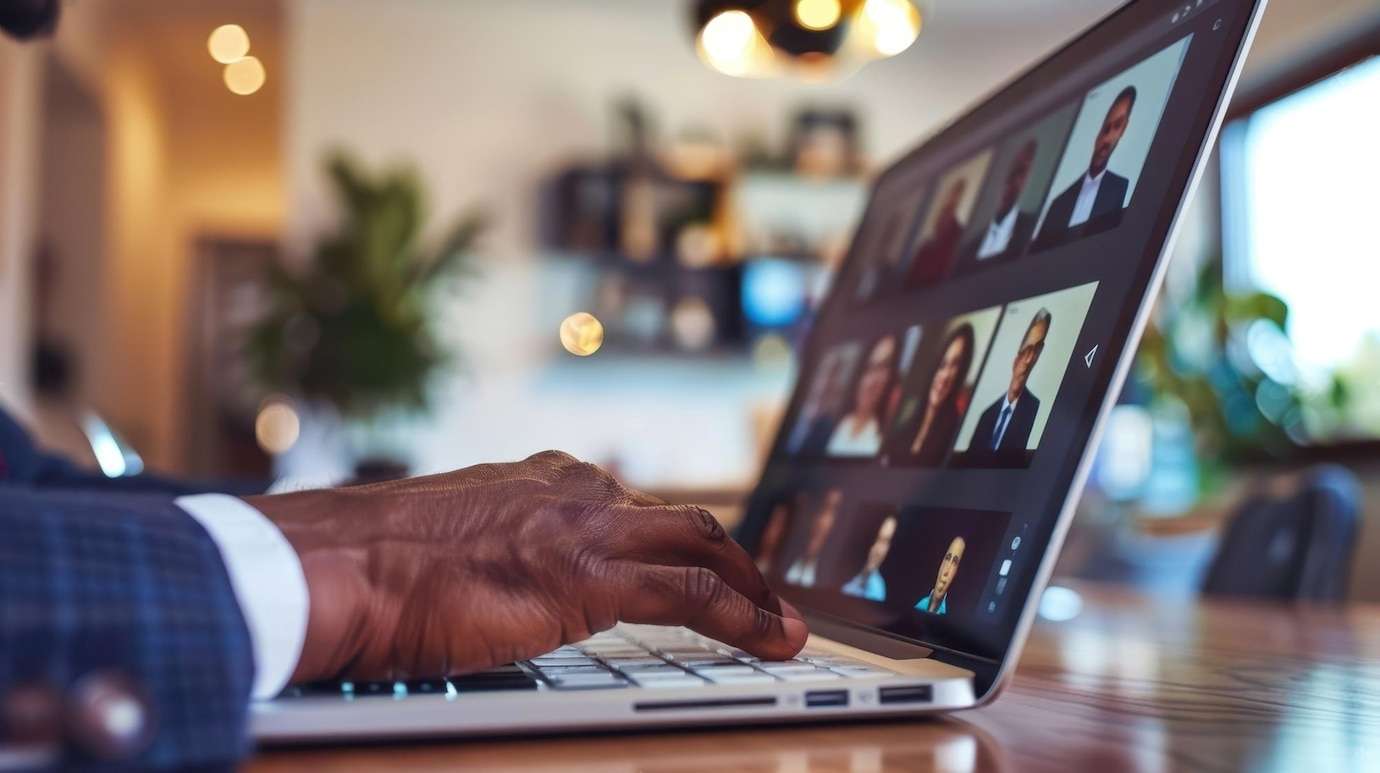Hosting events on LinkedIn has transformed from a simple networking opportunity to a powerful business development tool. When done right, it can be a game-changer for professionals seeking high-paying clients. LinkedIn is the go-to platform for professionals, making it an ideal place to host events that attract and engage potential clients with significant budgets.

In this guide, we’ll explore how you can leverage LinkedIn Events to engage high-paying clients, along with practical strategies to ensure your events leave a lasting impression.
The Power of LinkedIn Events for Client Engagement
LinkedIn Events enable professionals to gather targeted audiences virtually. Whether you’re hosting webinars, workshops, or networking sessions, these events give you a platform to showcase expertise and establish trust. High-paying clients often seek subject-matter experts, and LinkedIn provides the perfect medium for creating that authority.
What’s more, hosting an event allows you to interact with prospective clients directly—opening a real-time line of communication that static content just can’t offer. This interaction boosts engagement, and the more people engage with your content, the more LinkedIn’s algorithm will favor your profile.
Why High-Paying Clients Engage in LinkedIn Events
High-paying clients look for service providers or partners who demonstrate value beyond a surface level. Hosting a LinkedIn Event is your opportunity to show off that value in an interactive way. Think of these events as less of a “sales pitch” and more of an opportunity to teach, share insights, and build relationships.
1. The Importance of LinkedIn Recommendations for Personal Branding
LinkedIn recommendations play a pivotal role in personal branding. High-paying clients seek professionals they can trust—people with proven expertise and satisfied clients. Recommendations on LinkedIn act as public testimonials, showcasing your credibility and competence to a potential client.
By hosting LinkedIn Events, you have an opportunity to directly ask participants for recommendations, reinforcing your value to future clients. The more strong recommendations you collect, the more likely high-paying clients will feel comfortable reaching out to work with you.
2. How to Request Strong LinkedIn Recommendations from Clients
After hosting a successful LinkedIn Event, you’re in the perfect position to ask attendees (especially satisfied clients) for a recommendation. But how do you ask without sounding pushy?
- Timing is Everything: The best time to ask for a recommendation is right after you’ve delivered significant value. This could be after a successful event, a fruitful collaboration, or completing a project. Strike while the positive experience is fresh in their mind.
- Personalized Requests: Make your recommendation request specific. Instead of a generic message, refer to the work you did together. For example, “I’d really appreciate it if you could highlight the strategies we discussed in my event that you found helpful.”
- Focus on Key Strengths: Guide the client to mention particular strengths that align with what future high-paying clients may look for—whether it’s your expertise in a specific area, your professionalism, or your problem-solving skills.
3. Writing Effective LinkedIn Recommendations for Others
When you give, you often receive. Writing thoughtful recommendations for others on LinkedIn can encourage them to reciprocate. High-paying clients, in particular, pay attention to both given and received recommendations to gauge your networking abilities and how others perceive you in a professional environment.
To write an effective recommendation:
- Be specific. Highlight particular skills, achievements, or qualities.
- Keep it authentic. Gushing, vague praise can seem insincere.
- Tie it to outcomes. If you worked on a project together, mention the results and their impact.
4. How to Feature LinkedIn Recommendations on Your Profile
Featuring recommendations on your LinkedIn profile makes it easy for high-paying clients to see your best endorsements without digging through your profile. You can pin the most relevant and glowing recommendations to the top of your profile, highlighting them in a way that feels natural and credible.
To do this:
- Go to your LinkedIn profile.
- Scroll down to the recommendations section.
- Click “Manage,” and choose which recommendations you want to feature.
5. Using LinkedIn Endorsements to Highlight Key Skills
LinkedIn endorsements are an underrated tool for demonstrating your expertise. While recommendations provide context and testimonials, endorsements provide quick, at-a-glance validation of your skills. High-paying clients may skim this section to see if your skills align with their needs.
Encourage clients and event attendees to endorse you for specific skills related to the services or expertise you highlighted during your LinkedIn Event. The more endorsements you have in key areas, the stronger your profile will appear.
6. How to Organize LinkedIn Recommendations for Maximum Impact
Simply gathering recommendations isn’t enough—you need to organize them for maximum impact. High-paying clients are often short on time and will quickly scan your profile for relevant information.
Consider:
- Relevance: Feature recommendations from clients in industries similar to those you want to attract.
- Recency: Keep your recommendations updated to show recent work and relationships.
- Diversity: A range of recommendations from clients, peers, and collaborators signals well-rounded expertise.
7. Leveraging LinkedIn Recommendations to Attract High-Paying Clients
To attract high-paying clients, your LinkedIn recommendations should align with their expectations. Here’s how to do that:
- Highlight High-Value Projects: Make sure the recommendations feature high-stakes projects or clients that reflect your ability to handle complex tasks.
- Showcase Leadership: Recommendations should speak to your leadership, problem-solving, and decision-making skills, especially in situations that mirror what potential high-paying clients need.
8. The Role of LinkedIn Endorsements in Building Trust
Trust is critical when dealing with high-paying clients, and LinkedIn endorsements act as micro-verifications of your expertise. Although endorsements aren’t as in-depth as recommendations, they add social proof to your skillset.
When many people endorse you for the same skill, it suggests you consistently deliver on that skill, reinforcing trust. Encourage event participants and clients to endorse your key skills after an event.
9. How to Increase Your LinkedIn Endorsements Strategically
Building endorsements isn’t about quantity but quality. Here’s how to increase them strategically:
- Ask Attendees: After hosting a LinkedIn Event, ask attendees to endorse the skills you demonstrated.
- Endorse Others: Often, when you endorse others, they will reciprocate.
- Be Specific: Ask for endorsements in areas most relevant to attracting high-paying clients.
10. Best Practices for Endorsing Others on LinkedIn
Endorsing others can be a networking tool that strengthens relationships and opens doors to new opportunities. Here’s how to do it right:
- Be Honest: Only endorse people for skills you’ve personally witnessed.
- Be Selective: Focus on skills that align with the person’s goals and what you genuinely value in their work.
- Follow Up: If you endorse someone after an event, follow up with them, potentially opening the door to further collaboration.
11. How to Respond to LinkedIn Recommendations and Endorsements
Always respond to recommendations and endorsements. For recommendations, a simple thank-you message goes a long way. For endorsements, return the favor by endorsing a skill you’ve seen them demonstrate.
This article continues with in-depth strategies on converting LinkedIn recommendations into testimonials, updating endorsements, and using them in marketing strategies, all of which are key to engaging high-paying clients.
This is a holistic approach to leveraging LinkedIn Events and recommendations to build a network of trust, authority, and ultimately, high-paying clients.
12. The Value of Peer Recommendations on LinkedIn
Peer recommendations can be just as powerful as those from clients, especially when attracting high-paying clients. These endorsements show that your peers respect your work and value your contributions, reinforcing your credibility.
High-paying clients look for well-rounded professionals who have strong networks and collaborate effectively. If respected colleagues have taken the time to recommend you, it adds weight to your profile. After hosting LinkedIn Events, reach out to co-presenters, collaborators, or event organizers for peer recommendations, as they can offer insights into your skills that clients might not mention.
13. How to Convert LinkedIn Recommendations into Testimonials
LinkedIn recommendations are incredibly valuable on the platform, but you can also leverage them outside of LinkedIn. Converting recommendations into testimonials can help you amplify your credibility across different marketing channels. Here’s how:
- Seek Permission: Before using a LinkedIn recommendation as a testimonial elsewhere (like on your website or marketing materials), always ask for the recommender’s consent. A simple message such as, “Would you mind if I used your LinkedIn recommendation as a testimonial on my website?” will usually suffice.
- Keep It Authentic: When converting a recommendation into a testimonial, avoid altering the content too much. You want the language to sound natural and personal, which will resonate more with potential high-paying clients.
- Feature Strategically: Place these testimonials where they’ll have the most impact, such as on a client proposal page, your website’s services page, or even in your email signature.
14. Managing and Updating Your LinkedIn Endorsements Over Time
Endorsements on LinkedIn can grow stale if they aren’t updated regularly. High-paying clients are more likely to work with someone whose skills are up-to-date and relevant. Regularly managing and updating your endorsements ensures that your profile stays current.
Here’s a process for keeping your endorsements fresh:
- Periodically Review: Every few months, go through your endorsements to make sure they still reflect your top skills.
- Prioritize Relevant Skills: Ask colleagues, clients, and event attendees to endorse your most recent skills, especially those that are important to the type of high-paying clients you want to attract.
- Remove Irrelevant Endorsements: If you’ve shifted your focus or no longer offer certain services, remove endorsements for outdated skills to maintain clarity in your profile.
15. Using LinkedIn Recommendations in Your Marketing Strategy
LinkedIn recommendations should be an integral part of your broader marketing strategy, especially when you’re targeting high-paying clients. Here are some ways you can leverage them:
- Client Proposals: Incorporate LinkedIn recommendations into client proposals as testimonials to build trust and showcase your expertise. A well-placed recommendation can add credibility, particularly if it’s from a high-profile client or highlights results that align with the client’s goals.
- Email Marketing: Including snippets of LinkedIn recommendations in email newsletters or marketing emails can reinforce your authority and reassure potential clients that others have seen success from your work.
- Social Media: Occasionally share LinkedIn recommendations on other platforms like Twitter, Facebook, or Instagram to broaden your reach and emphasize your credibility across multiple channels.
16. How to Ask for Endorsements Without Being Pushy
When it comes to asking for endorsements, subtlety is key. You don’t want to come across as desperate or overly aggressive, especially if you’re dealing with high-paying clients or senior professionals. Here’s how to request endorsements in a way that feels natural and non-pushy:
- Be Specific and Sincere: When reaching out, be upfront about why you’re asking for an endorsement. For example, if you hosted a LinkedIn Event on leadership skills, you could say, “If you found the strategies from my event useful, I’d appreciate it if you could endorse me for leadership development.”
- Reciprocate: Offer to endorse the person in return for a skill you’ve seen them demonstrate. This creates a mutual exchange and often makes people more willing to endorse you without feeling burdened.
- Leverage Event Feedback: After a LinkedIn Event, attendees are often feeling positive about the value they’ve received. Take advantage of this moment by including a request for endorsements in your post-event follow-up message.
17. Highlighting LinkedIn Recommendations in Client Proposals
When pitching to high-paying clients, trust is crucial. Including LinkedIn recommendations in your client proposals can offer proof that you’ve delivered results for similar clients. Here’s how to do it effectively:
- Choose Strategic Recommendations: Select recommendations that directly relate to the services or solutions you’re proposing. If you’re pitching a consulting service, showcase a recommendation from a previous client who benefited from your consulting work.
- Highlight Specific Results: High-paying clients are often focused on ROI. Include recommendations that highlight specific, quantifiable results, like revenue growth, cost savings, or efficiency improvements.
- Format It Cleanly: Include recommendations in a clean, professional way. Use them as supporting evidence to complement your proposal, rather than overcrowding the document.
18. How to Use LinkedIn Endorsements for Skill Validation
Endorsements are an easy and effective way to validate your skills on LinkedIn. High-paying clients may not have time to read through every recommendation on your profile, but they will quickly scan your endorsements to ensure you have the skills they need.
To make the most of endorsements:
- Focus on Key Skills: Ensure that your top three to five skills, which are most relevant to high-paying clients, have the most endorsements. If you’re targeting high-level clients for marketing services, make sure your top-endorsed skills include SEO, content marketing, and digital strategy.
- Ask Strategically: After a LinkedIn Event, ask attendees to endorse you for specific skills you showcased during the event. This adds real-time relevance to your profile.
19. Building a Strong Endorsement Network on LinkedIn
A strong endorsement network goes beyond just having people click “endorse.” It’s about building genuine relationships where people can vouch for your skills in a meaningful way. Here’s how to do it:
- Engage Regularly: Participate in conversations, comment on posts, and engage with content from those in your network. The more value you offer, the more likely people are to endorse you.
- Offer Value First: Endorse the skills of your connections and colleagues whenever appropriate. This often leads to reciprocal endorsements, but it also builds goodwill and strengthens your network.
- Host Events and Be Visible: Hosting LinkedIn Events gives you visibility and reminds your connections of your expertise. Attendees who find value in your events are more likely to endorse you afterward, especially if you’ve demonstrated your skills in a practical, impactful way.
Wrapping Up: LinkedIn Events and Recommendations as a Pathway to High-Paying Clients
Hosting LinkedIn Events is an invaluable strategy for engaging high-paying clients, but it’s not just the event itself that matters. Building trust, showcasing expertise, and providing social proof through LinkedIn recommendations and endorsements are the foundation of your professional brand.
When these elements are strategically aligned, they create a robust online presence that resonates with high-paying clients who are looking for value and credibility. By hosting insightful events, collecting strong recommendations, and cultivating a network of endorsements, you’ll elevate your LinkedIn profile—and your business.
Takeaway: Treat each LinkedIn Event as an opportunity not just to connect with clients but to gather endorsements and recommendations that will work for you long after the event ends. High-paying clients are more likely to engage with professionals who can demonstrate their worth through both direct interactions and the testimonials of others.















